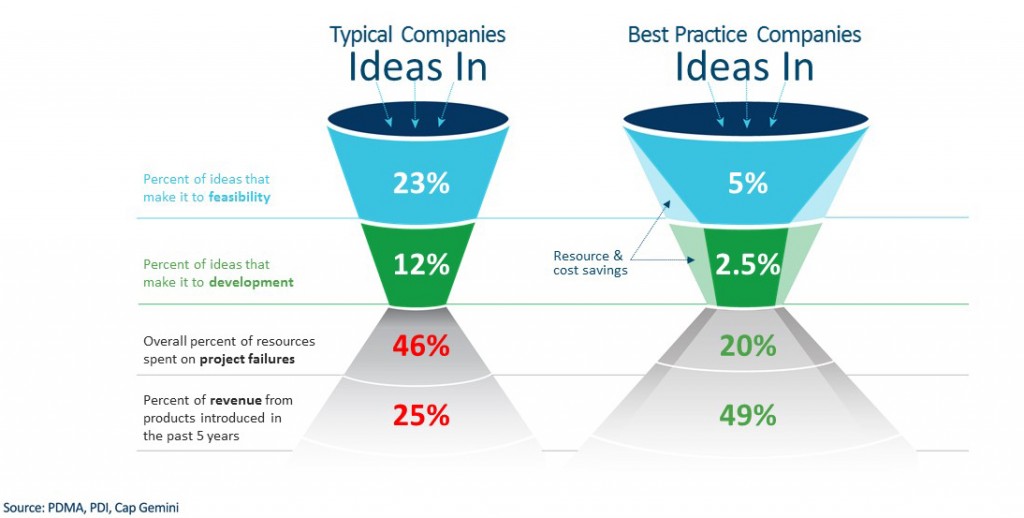Do you want your company to be recognized as the innovation leader within your industry? Do you want to deliver the next disruptive innovation like Apple, Facebook, Airbnb, and Uber? Here's a tip on how you can start today: stop creating and start innovating!
Maybe your company struggles with managing innovation. You have many idea “light bulbs” in the pipeline, but you don't see results. You ask yourself: Why don't we get more results from our innovation efforts? The truth is that there is no direct correlation between the number of ideas and innovation success. In fact, some even argue that the constant creation of ideas might be the very reason why the company is not innovating successfully. 1 The reason for this is because “innovation” is so much more than “an idea,” and these terms are not interchangeable. A true innovation creates value for the consumer or user – and as a result, for the company that brings that innovation to the market – and an idea alone cannot do that.
So what should you do? Research has shown that companies successful in innovation usually have a “tight collar” in their idea-to-market process. 2 This means that ideas should be critically reviewed, and only a few should be selected for the initial investment of concept development, and even fewer for development. Take a look at the diagram below: the focus of best-practice companies is on the quality of the high-value ideas and not on the mere quantity of ideas. More selective decision-making regarding which ideas enter your pipeline can generate twice as much revenue from new products.

Are you tired of not generating results from your innovation?
Do you also want to double your revenue from your new products? Here are 10 steps to move from the idea creation stage to commercialization, and take your idea from a killer concept to the next big thing:Stop putting time and effort into the wrong things. Innovation is more than just idea generation. Select just a few good high-value ideas, develop these into great high-value ideas, and move these to the next stage in your innovation lifecycle. Because it's true: less is more. And fewer ideas just might result in more revenue generated by your new products. Start today!
You may also be interested in:
- Webinar: Turning Great Ideas into Great Products
- e-Book: Ten Ways to Generate Higher Returns from Your Innovation Investments
My previous blog post:
Stay up-to-date:
- Sign up to receive our monthly inKNOWvations newsletter highlighting innovation management articles with trends, benchmark data, events and more. Once you've clicked the link, select "Yes please" from the drop-down next to "inKNOWvations newsletter" to start receiving this regular email.
REFERENCES 1 Levitt, T. (2002, August). Creativity Is Not Enough. Retrieved from Harvard Business Review: https://hbr.org/2002/08/creativity-is-not-enough 2 PDMA, PDI, Cap Gemini





